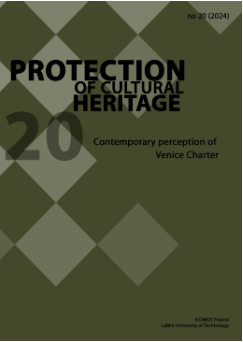Accessibility to the New Geoparq of Siurana
Josep Maria Adell-Argilés
josep.adell@upm.es(Spain)
Susana Mora Alonso-Muñoyerro
(Spain)
https://orcid.org/0000-0001-6334-5194
Dolores De La Piedra Gordo
(Spain)
Miguel García Jiménez
(Spain)
Edgar Lombana Echeverry
(Spain)
Abstract
The little town of Siurana, with just thirty houses, is located on a perched geological isthmus and surrounded with precipices. Historically, the place is famous for its castle (now dilapidated), which was the last bastion of Catalonia during the Reconquista. For only twenty years, it was easily accessible by a paved road. According to one legend, the “Moorish Queen” jumped from a cliff on her horse before falling into the hands of the Christians, leaving a horseshoe near the castle on a vertical precipice. Later, a Romanesque Church was built there in the twelfth century.
1. The local environment is urban protected, but geological protection is also needed to preserve the spectacular stone strips down below at the water reservoir. It is necessary to improve the accessibility of Siurana as a geological park by rebuilding old foot paths and reinforcing the steep enclave. The geological features are highly Visible and spectacular:
rolling hills of brown slate followed by wind-carved, red sandstone cliffs crowned with white limestone.
2. Accessibility can be developed by basing on existing roads and making new ones that are necessary to enjoy the park and comply with fire regulations.
3. In the town, it is necessary to build roads accessing the treatment plant, and establish a Cultural Interpretation Center dedicated to local history. Also, a parking lot for around twelve vehicles should be constructed at the lower level, where it would be protected by trees.
4. A Viewpoint at the precipice in Salto de la Reina Mora has also been proposed. It would offer a View of the castle and the precipice in all their glory, but would require a special access ramp.
5. To make Visits easier and more enjoyable, it is proposed that Visitors take electric vans up the road (8 km) and descend by a New Cable Car between Siurana and Cornudella del Montsant at the base of the mountain, where the car park is located.
Keywords:
Siurana Castle, accesibility, old paths, Interpretation CenterReferences
Cartografia del IGME (Instituto Geologico y Minero de Espafia). Hoja 445 Cornudella.
Google Scholar
Plano geografico de Cornudella del Montsant (Siurana). Generalitat de Catalunya. Departament de Territori i Sostenibilitat.
Google Scholar
Plano Catastral del pueblo de Siurana, con el camino a la depuradora. Direccion General del Catastro. Ministerio de Hacienda y Administraciones Publicas.
Google Scholar
Cornudella de Monsant 1989-1998. Boletin Ajuntament. pp. 389-395.
Google Scholar
Catala i Roca, P. Els castells catalans IV, Barcelona, 1973, p.411—431,
Google Scholar
Aloguin i Pallach, Ramon. Guia de fortificacions de Tarragona, Tarragona, 1998, p. 88.
Google Scholar
VVAA. Cataleg de monuments i conjunts historico—artistics de Catalunya, 1990, p. 386.
Google Scholar
L’ Arquitectura Romanica a Catalunya. Puig i Cadafalch I. 1950. Ed. Base (facsimil 1996).
Google Scholar
Caracteritzacio Histérica del paisatge del Priorat-Montsant-Siurana. Iordi Bolos i Masclans. Observatori del Paisatge de Catalunya. Marzo de 2016 (Dossier de candidatura a la UNESCO. Retirado en 2022).
Google Scholar
Se agradece a Luz de Flash, las fotos base Mirador Salto Reina Mora.
Google Scholar
Siurana en niebla https://www.youtube.com/watch?v=d57q4rKUguo. Diciembre 2016. https://www.youtube.com/watch?v=QRhamMyxMas. Siurana un pueblo de leyenda. Septiembre 2020.
Google Scholar
Authors
Dolores De La Piedra GordoSpain
Authors
Miguel García JiménezSpain
Authors
Edgar Lombana EcheverrySpain
Statistics
Abstract views: 94PDF downloads: 96
License

This work is licensed under a Creative Commons Attribution-ShareAlike 4.0 International License.








